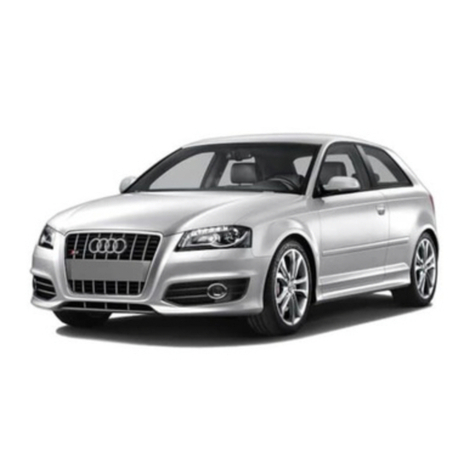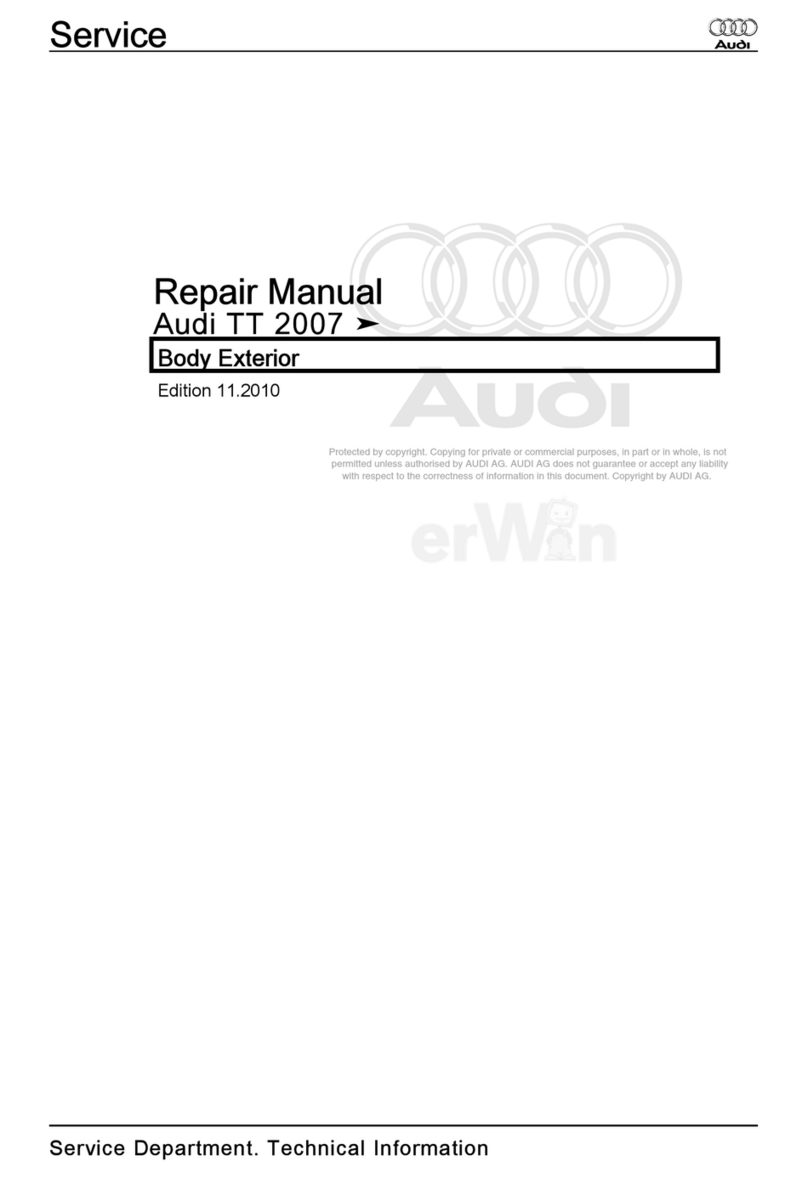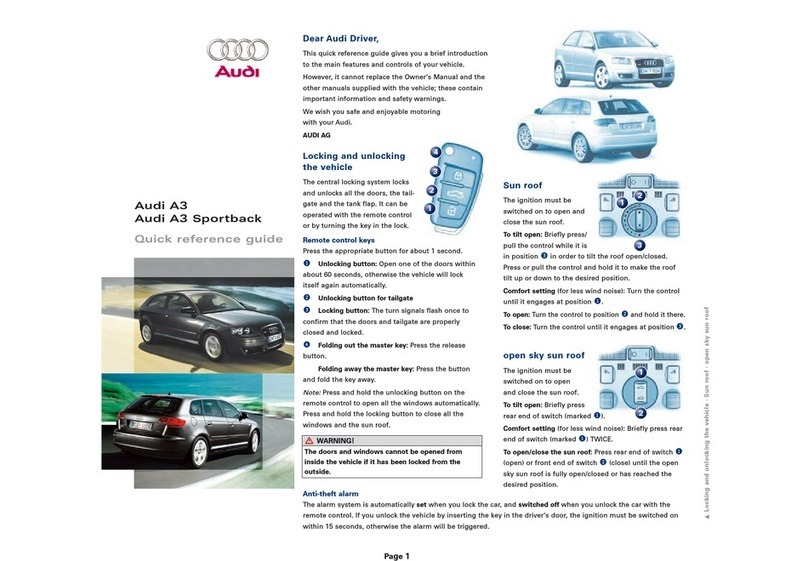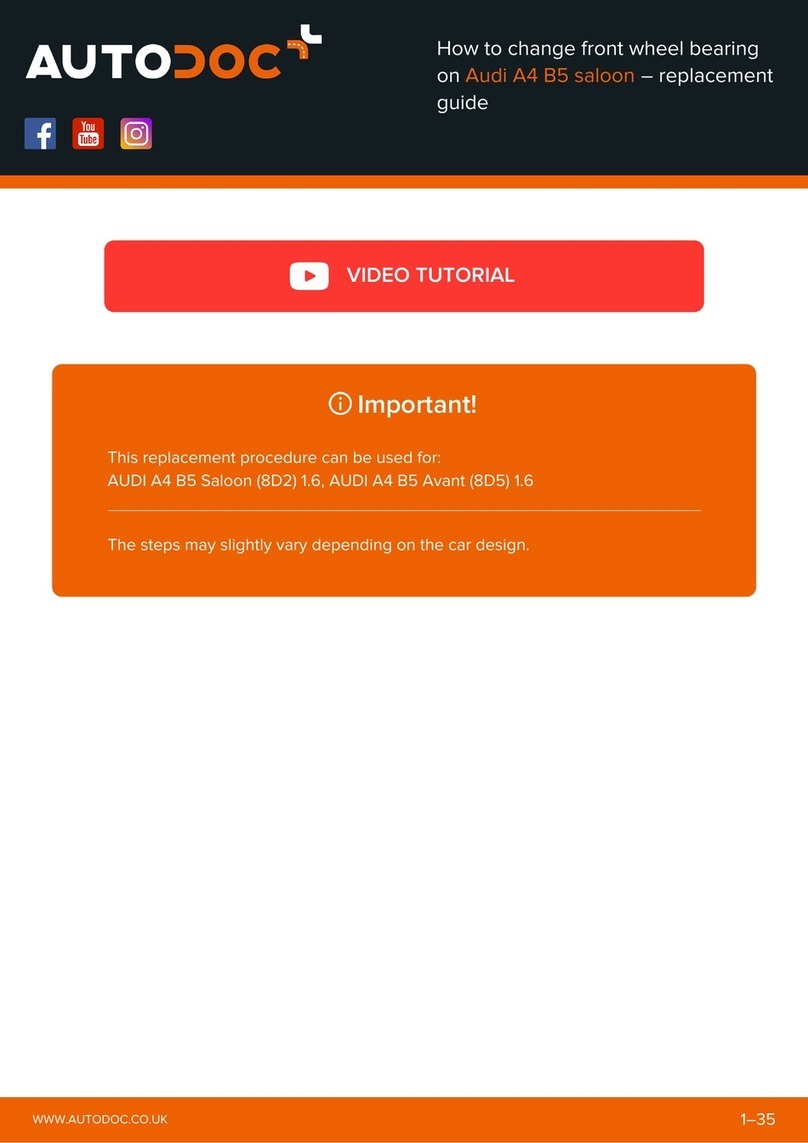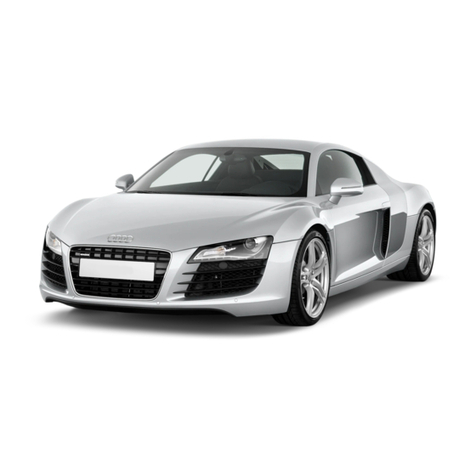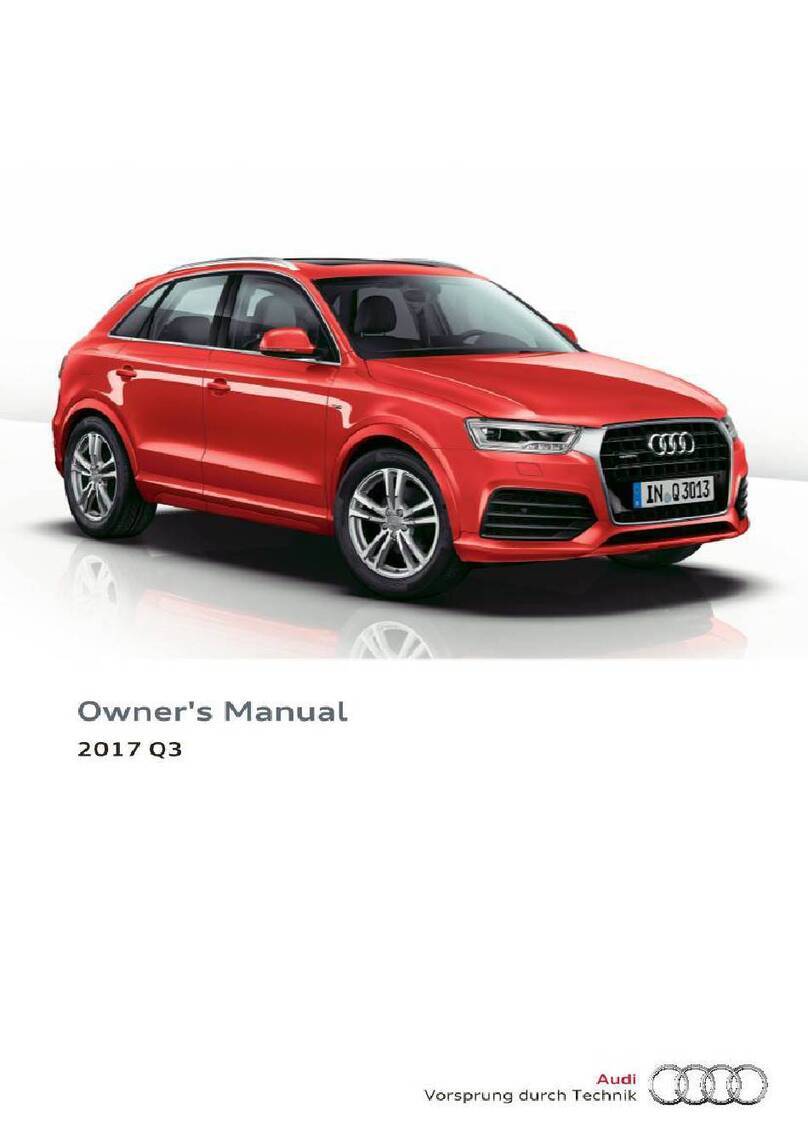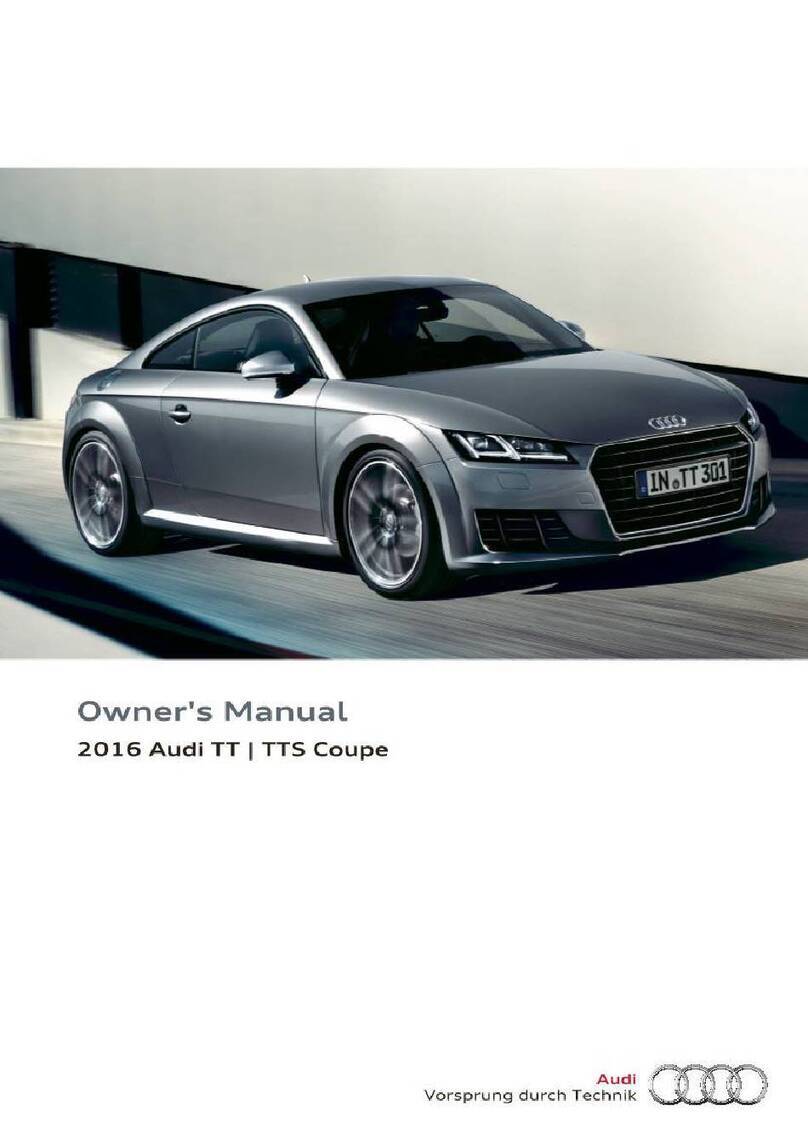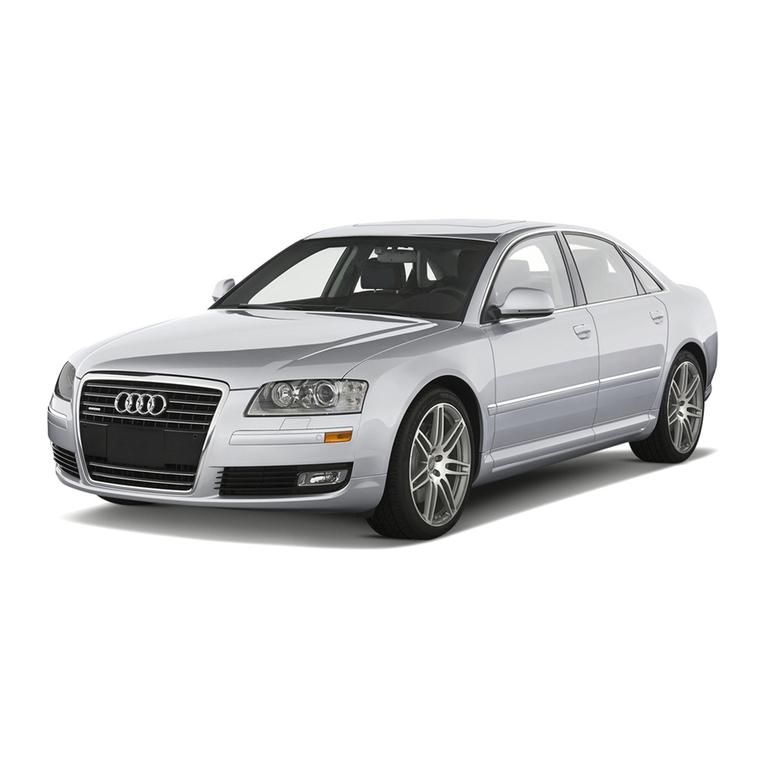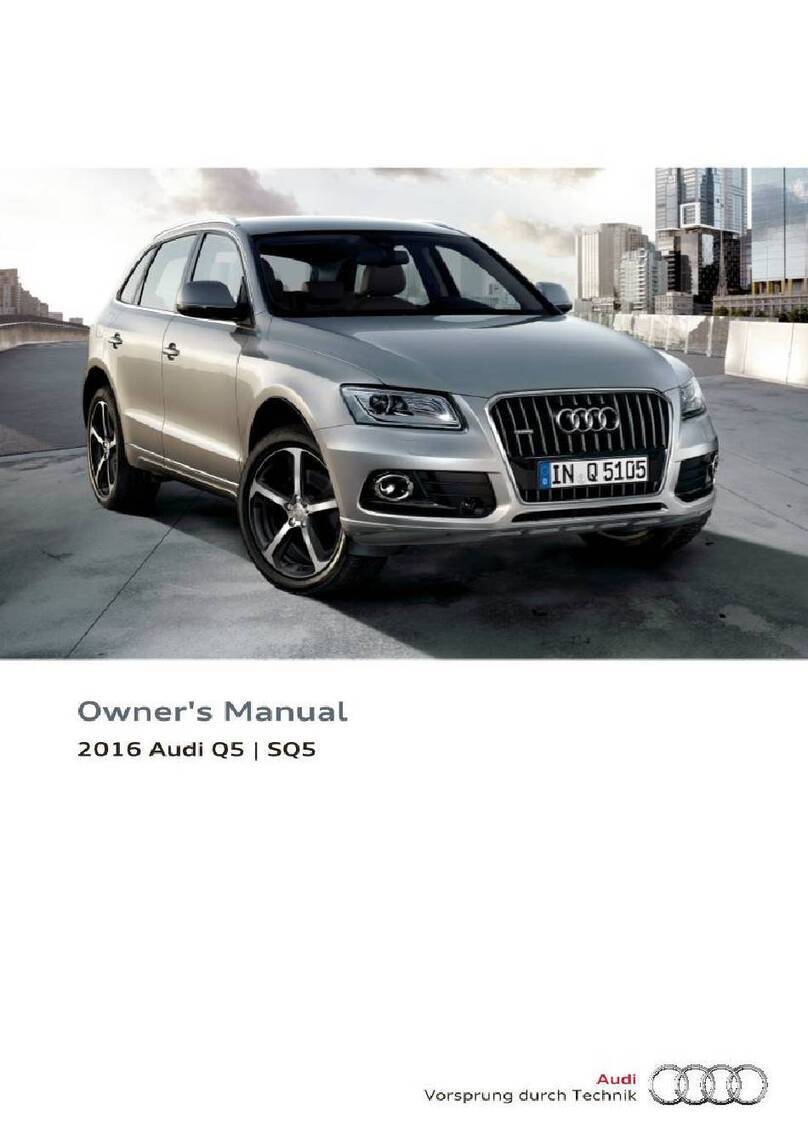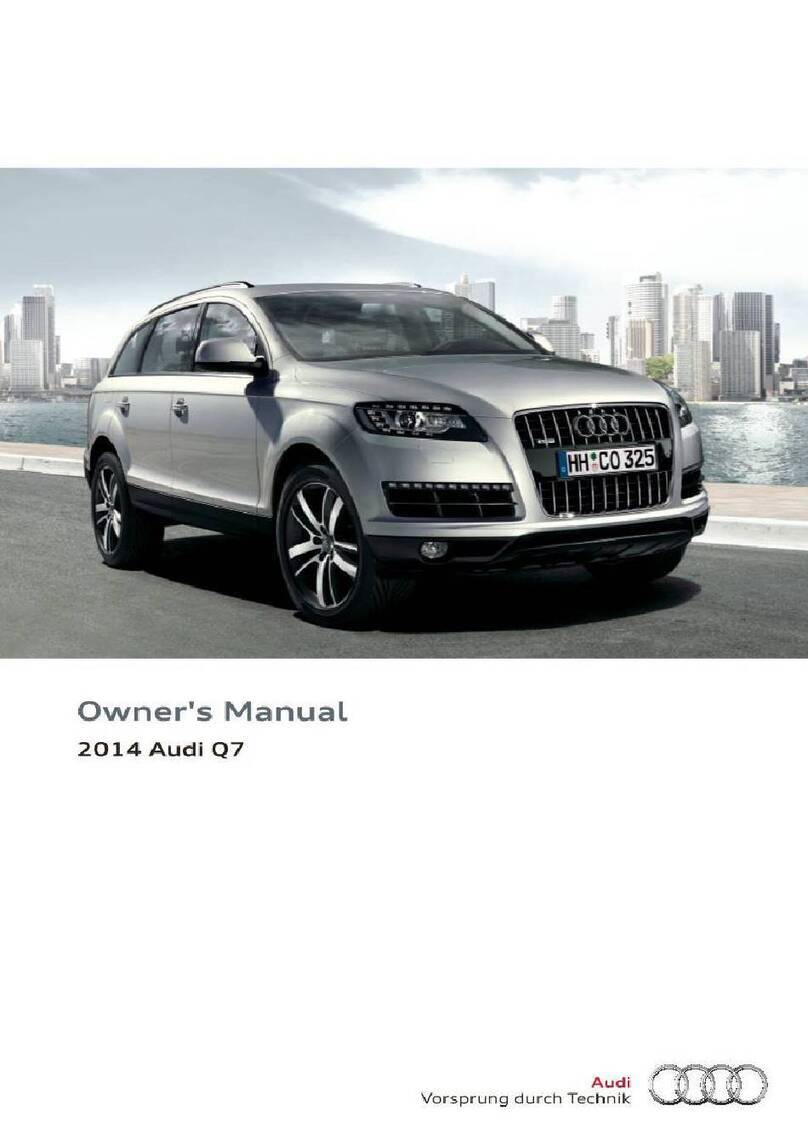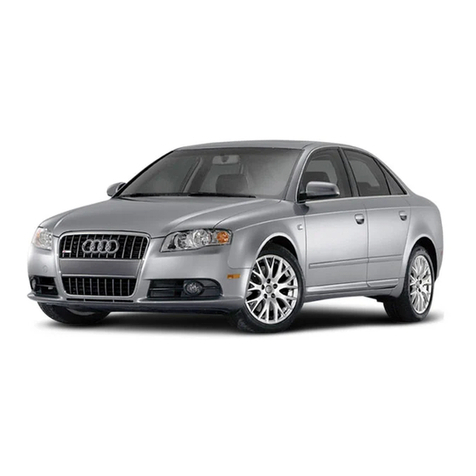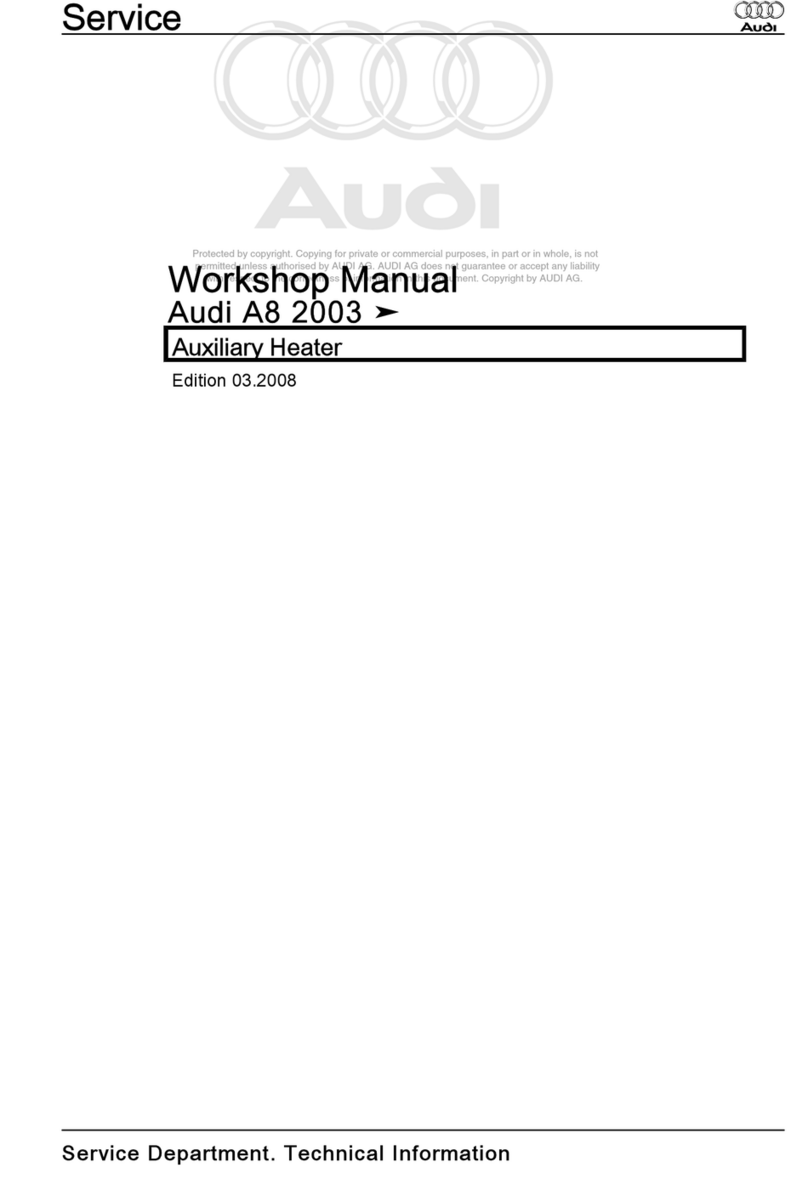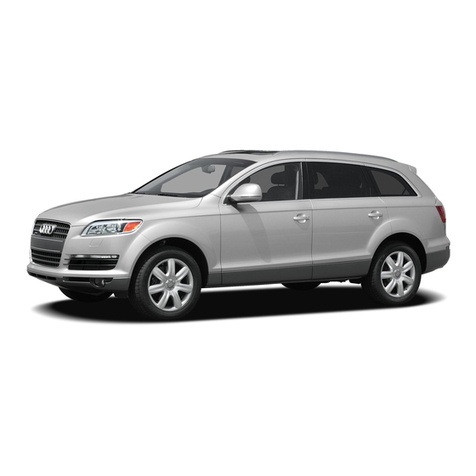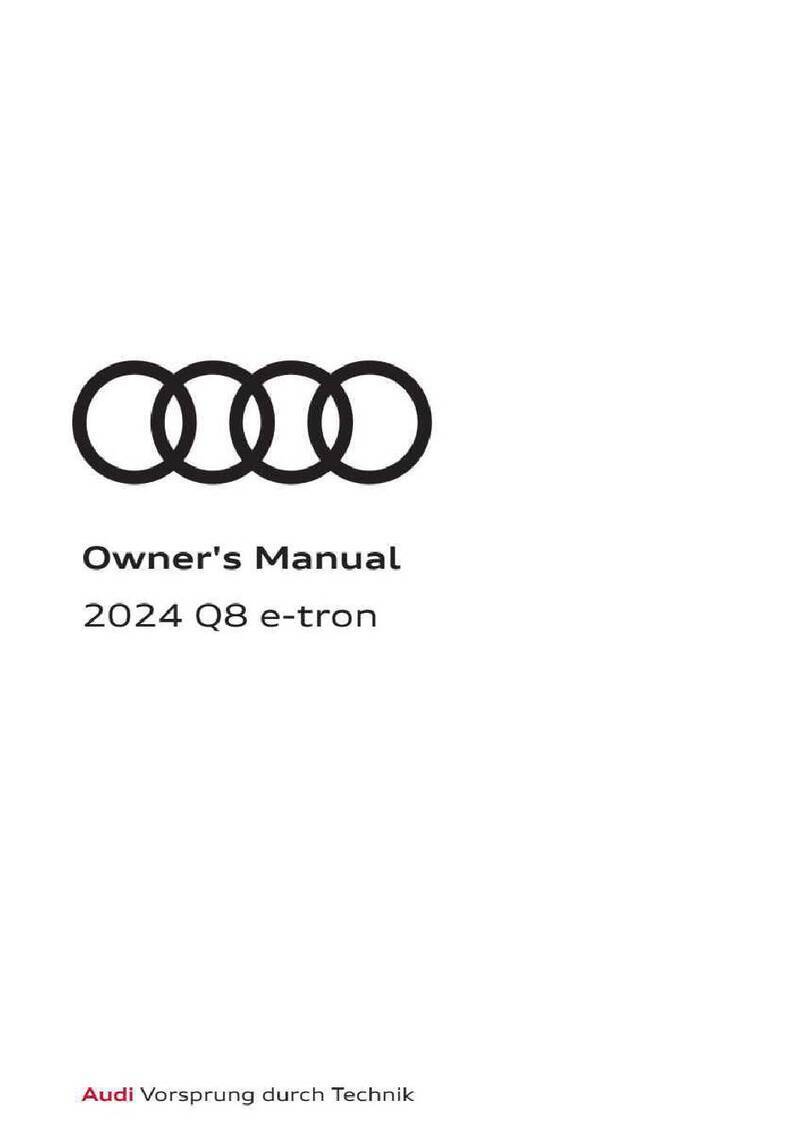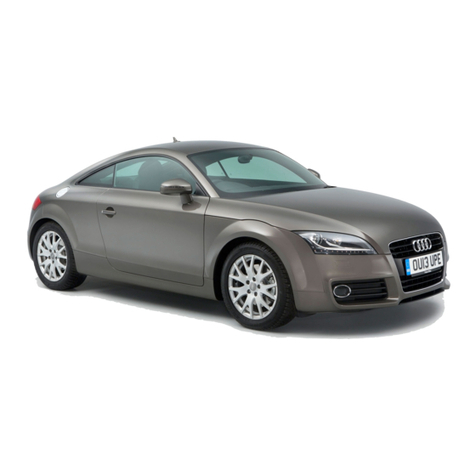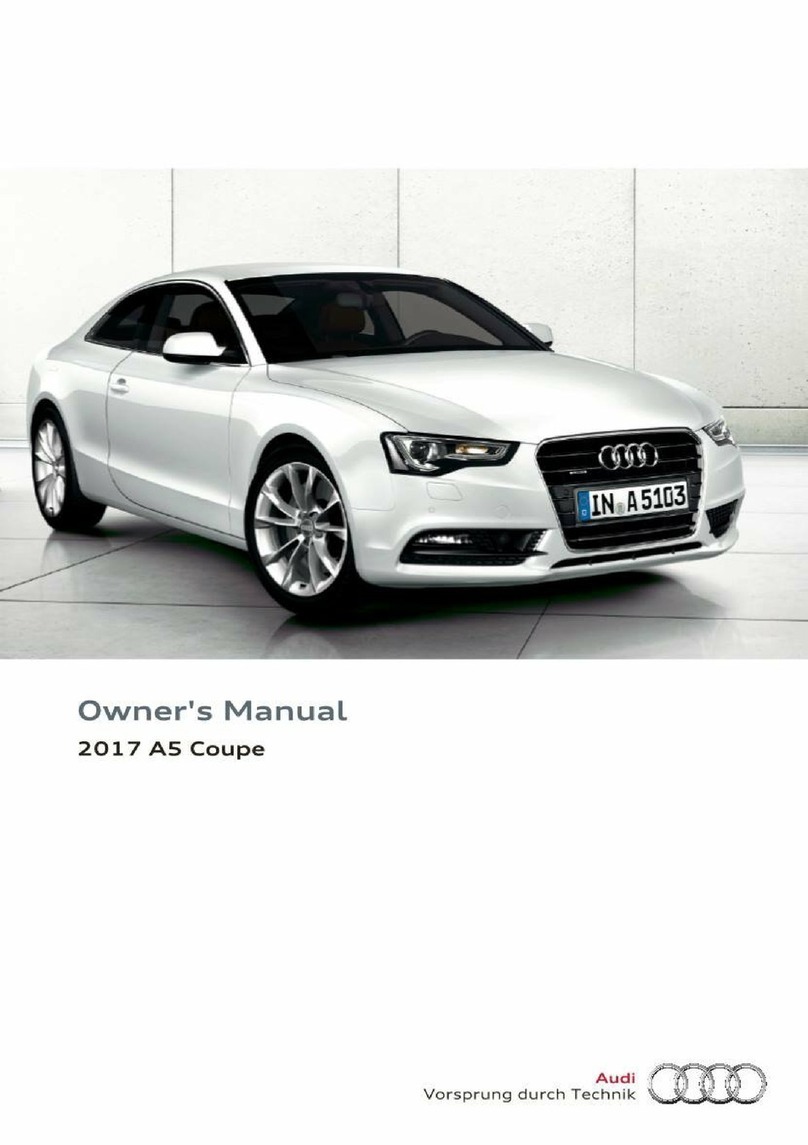
Protected by copyright. Copying for private or commercial purposes, in part or in whole, is not
permitted unless authorised by AUDI AG. AUDI AG does not guarantee or accept any liability
with respect to the correctness of information in this document. Copyright by AUDI AG.
Contents
00 - General, Technical Data . . . . . . . . . . . . . . . . . . . . . . . . . . . . . . . . . . . . . . . . . . . . 1
1 Safety Precautions . . . . . . . . . . . . . . . . . . . . . . . . . . . . . . . . . . . . . . . . . . . . . . . . . . . . . . . . 1
1.1 Working on Fuel System . . . . . . . . . . . . . . . . . . . . . . . . . . . . . . . . . . . . . . . . . . . . . . . . . . 1
1.2 On Test Drives Using Test and Measuring Devices . . . . . . . . . . . . . . . . . . . . . . . . . . . . . . 2
1.3 Full or Partially Full Fuel Tanks, Removing and Installing . . . . . . . . . . . . . . . . . . . . . . . . . . 2
1.4 Fuel Tank, Removing and Installing . . . . . . . . . . . . . . . . . . . . . . . . . . . . . . . . . . . . . . . . . . 2
2 General Repair Information . . . . . . . . . . . . . . . . . . . . . . . . . . . . . . . . . . . . . . . . . . . . . . . . 3
2.1 Fuel Supply and Injection System, Clean Working Conditions . . . . . . . . . . . . . . . . . . . . . . 3
2.2 Test Conditions . . . . . . . . . . . . . . . . . . . . . . . . . . . . . . . . . . . . . . . . . . . . . . . . . . . . . . . . . . 3
2.3 Contact Corrosion . . . . . . . . . . . . . . . . . . . . . . . . . . . . . . . . . . . . . . . . . . . . . . . . . . . . . . . . 3
20 - Fuel Supply . . . . . . . . . . . . . . . . . . . . . . . . . . . . . . . . . . . . . . . . . . . . . . . . . . . . . . 5
1 Fuel Tank with Attachments . . . . . . . . . . . . . . . . . . . . . . . . . . . . . . . . . . . . . . . . . . . . . . . . 5
1.1 Overview - Fuel Tank with Attachments . . . . . . . . . . . . . . . . . . . . . . . . . . . . . . . . . . . . . . . . 5
1.2 Fuel Tank, Draining . . . . . . . . . . . . . . . . . . . . . . . . . . . . . . . . . . . . . . . . . . . . . . . . . . . . . . 7
1.3 Fuel Tank with Attachments, Removing and Installing . . . . . . . . . . . . . . . . . . . . . . . . . . . . 11
2 Fuel Pump, Fuel Delivery Unit and Fuel Level Sensor . . . . . . . . . . . . . . . . . . . . . . . . . . . . 17
2.1 Overview - Fuel Delivery Unit and Fuel Gauge Sensor . . . . . . . . . . . . . . . . . . . . . . . . . . . . 17
2.2 Fuel Pump, Electrical Testing . . . . . . . . . . . . . . . . . . . . . . . . . . . . . . . . . . . . . . . . . . . . . . . . 20
2.3 Fuel Pump Control Module J538 , Checking . . . . . . . . . . . . . . . . . . . . . . . . . . . . . . . . . . . . 22
2.4 Fuel Pump Control Module J538 , Through 10/2006, Removing and Installing . . . . . . . . . . 23
2.5 Fuel Pump Control Module J538 , From 11/2006, Removing and Installing . . . . . . . . . . . . 23
2.6 Fuel Pump, Checking Delivery Rate . . . . . . . . . . . . . . . . . . . . . . . . . . . . . . . . . . . . . . . . . . 24
2.7 Fuel Pump, Checking Delivery Rate . . . . . . . . . . . . . . . . . . . . . . . . . . . . . . . . . . . . . . . . . . 27
2.8 Fuel Pump, Checking Delivery Rate . . . . . . . . . . . . . . . . . . . . . . . . . . . . . . . . . . . . . . . . . . 30
2.9 Fuel Delivery Unit, Removing and Installing . . . . . . . . . . . . . . . . . . . . . . . . . . . . . . . . . . . . 34
2.10 Fuel Level Sensor G , Checking . . . . . . . . . . . . . . . . . . . . . . . . . . . . . . . . . . . . . . . . . . . . . . 40
2.11 Fuel Level Sensor G , Removing and Installing . . . . . . . . . . . . . . . . . . . . . . . . . . . . . . . . . . 42
2.12 Fuel Level Sensor 2 G169 , Checking . . . . . . . . . . . . . . . . . . . . . . . . . . . . . . . . . . . . . . . . 46
2.13 Fuel Level Sensor 2 G169 , Removing and Installing . . . . . . . . . . . . . . . . . . . . . . . . . . . . 48
2.14 Function of the Suction Jet Pumps . . . . . . . . . . . . . . . . . . . . . . . . . . . . . . . . . . . . . . . . . . . . 48
2.15 Suction Jet Pumps, Removing and Installing . . . . . . . . . . . . . . . . . . . . . . . . . . . . . . . . . . . . 50
3 Fuel Filter . . . . . . . . . . . . . . . . . . . . . . . . . . . . . . . . . . . . . . . . . . . . . . . . . . . . . . . . . . . . . . 57
3.1 Overview - Fuel Filter . . . . . . . . . . . . . . . . . . . . . . . . . . . . . . . . . . . . . . . . . . . . . . . . . . . . . . 57
3.2 Fuel Filter, Removing and Installing . . . . . . . . . . . . . . . . . . . . . . . . . . . . . . . . . . . . . . . . . . 57
4 EVAP Canister and Leak Detection System . . . . . . . . . . . . . . . . . . . . . . . . . . . . . . . . . . . . 61
4.1 Overview - EVAP System . . . . . . . . . . . . . . . . . . . . . . . . . . . . . . . . . . . . . . . . . . . . . . . . . . 61
4.2 EVAP Canister, Removing and Installing . . . . . . . . . . . . . . . . . . . . . . . . . . . . . . . . . . . . . . 62
4.3 EVAP Canister and Leak Detection System Hose Routing . . . . . . . . . . . . . . . . . . . . . . . . 63
4.4 Leak Detection System . . . . . . . . . . . . . . . . . . . . . . . . . . . . . . . . . . . . . . . . . . . . . . . . . . . . 63
4.5 Leak Detection Test, Performing . . . . . . . . . . . . . . . . . . . . . . . . . . . . . . . . . . . . . . . . . . . . 64
4.6 Leak Detection Pump V144 , Removing and Installing . . . . . . . . . . . . . . . . . . . . . . . . . . . . 66
5 Accelerator Pedal Mechanism . . . . . . . . . . . . . . . . . . . . . . . . . . . . . . . . . . . . . . . . . . . . . . 68
5.1 Overview - Accelerator Pedal Module . . . . . . . . . . . . . . . . . . . . . . . . . . . . . . . . . . . . . . . . 68
5.2 Accelerator Pedal Module with Throttle Position Sensors, Removing and Installing . . . . . . 68
6 Special Tools . . . . . . . . . . . . . . . . . . . . . . . . . . . . . . . . . . . . . . . . . . . . . . . . . . . . . . . . . . . . 70
7 Revision History . . . . . . . . . . . . . . . . . . . . . . . . . . . . . . . . . . . . . . . . . . . . . . . . . . . . . . . . . . 74
Audi Q7 2007 ➤
Fuel Supply System - Edition 10.2018
Contents i

